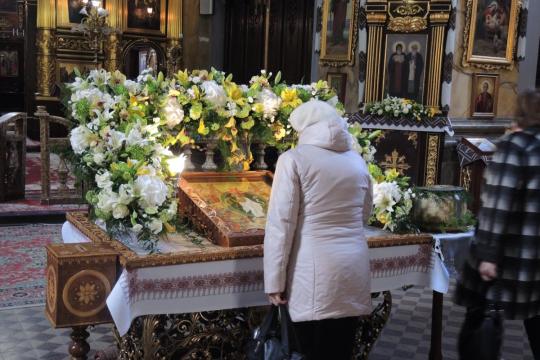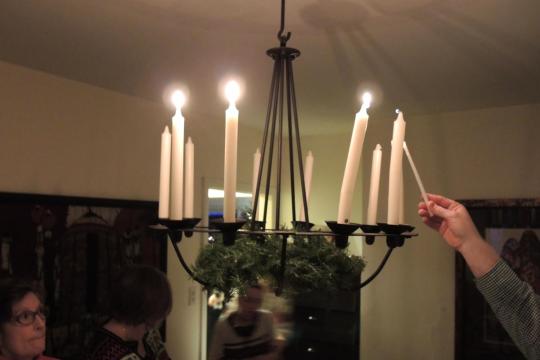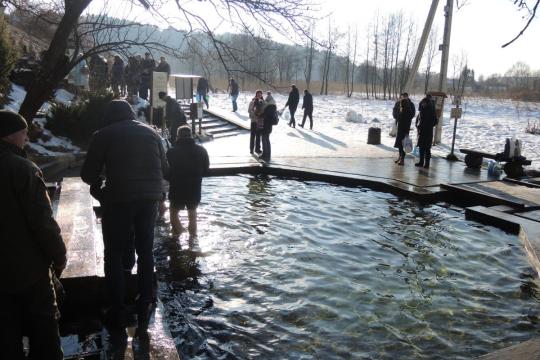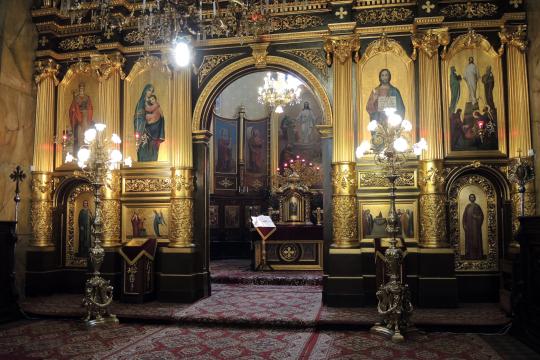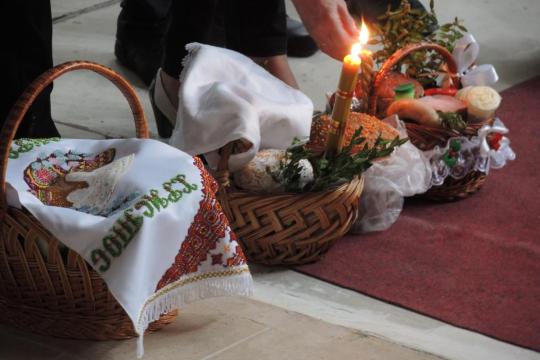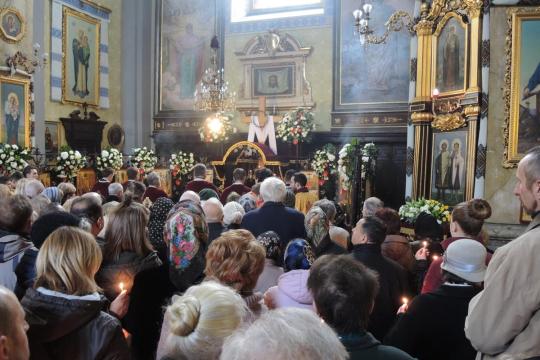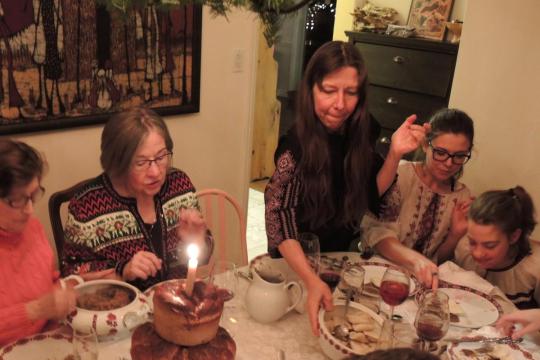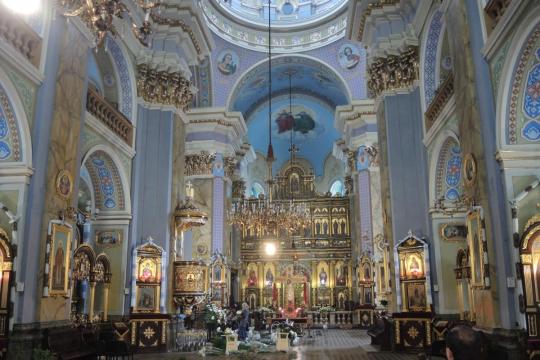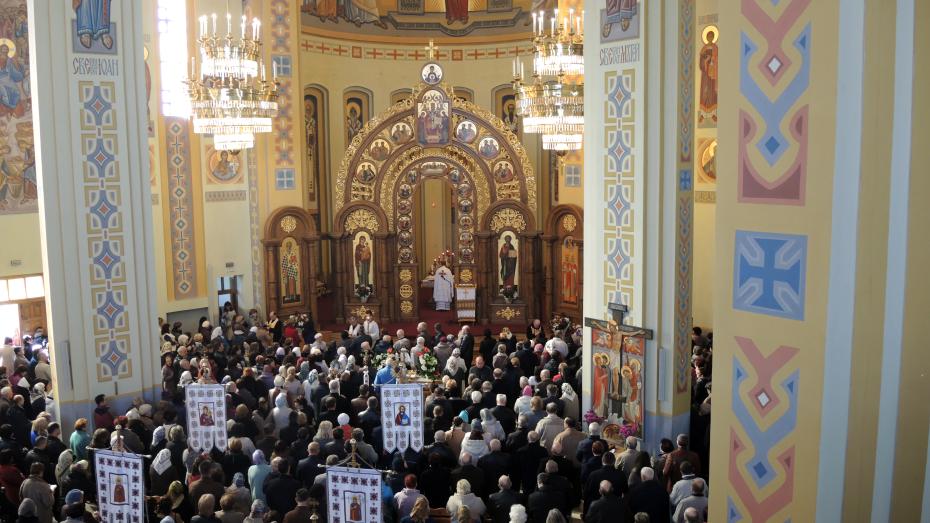
The Ukrainian Greek Catholic Church, the largest of the “Eastern” Catholic Churches, is rooted in a complex cultural patrimony: in the Byzantine liturgical, theological and spiritual tradition born in the first six centuries AD in Constantinople, when it was capital of the Eastern half of the Roman Empire; in Ukrainian culture, both from pre-Christian legacies and as reshaped over a millennium of Christian belief; and in its relation to the West and the Roman Church for over 400 years.1
In Ukraine, Greek Catholics are the majority of believers in the western region of the country once known as Galicia, which is the heartland of the Church. They are a minority in places like Kyiv, in the center of the country, and very tiny minority in the eastern part of the country.
The “Greek” in “Greek Catholic” refers to the Church’s Byzantine liturgical and spiritual legacy, not to Greeks in an ethnic sense.2 Since the 19th century, the Ukrainian Greek Catholic Church has been especially diligent about fostering Ukrainian culture and national identity, both in Ukraine and abroad.
Some 3.85 million of the Ukrainian Greek Catholic Church’s nearly 4.5 million members reside in Ukraine, but several waves of migration since the 1880s have expanded the Church’s reach to many continents. Today there are 172,800 Ukrainian Greek Catholics in Brazil, 169,600 in Argentina, 55,000 in Poland, 49,000 in the U.S.A., and 48,000 in Canada. There are dioceses elsewhere in Europe and in Australia as well.3 Following total suppression by Soviet authorities from 1946-1989, the Church has been reborn and is rebuilding in its homeland.
History
A fuller history of the Church is available on this site’s Ukraine page. Church tradition has it that St. Andrew the Apostle first preached the Christian message in the Ukrainian heartland in the early years after Jesus’ death, but in practice the establishment of the faith can be traced to its adoption by Princess Olga of Kyiv, and later by her grandson, Vladimir (Volodymyr) of Kyiv, who made it the state religion following his own conversion. The year of Vladimir’s baptism, 988, is commonly cited as the year when Christianity was established in the lands that are now Ukraine and Russia.
When the Great Schism divided the Eastern and Western Churches in 1054, the Kyivan Church remained in communion with Constantinople. In 1596, when most of the western half of modern-day Ukraine was ruled by Poland, a group of bishops from the Orthodox Church re-established communion with Rome through an agreement known as the Union of Brest,4 establishing the Ukrainian Greek Catholic Church.5
The Russian Empire later took control over most of the territory of present-day Ukraine and restored Orthodoxy in those lands, but in the western regions of Galicia (Halychina in Ukrainian) and Transcarpathia (Zakarpattia), which became part of the Austrian Catholic Habsburg empire, the Greek Catholic Church flourished. The late 19th and early 20th centuries migration from Galicia to the Americas in search of land and work, brought Ukrainian Catholic dioceses, churches and institutions to the United States, Canada, Argentina and Brazil.
Following World War II, the Soviets assumed control of Galicia and Transcarpathia and completely suppressed the Ukrainian Greek Catholic Church in its own home country. Ukrainian Greek Catholic practice continued in exile in Rome and in diaspora elsewhere.
In 1989, during the late Soviet era reforms of Mikhail Gorbachev, the legal status of the Greek Catholic Church was restored in Ukraine. Many churches were returned to the Ukrainian Greek Catholic Church, and new churches and other institutions were rebuilt.
Contemporary concerns
The Ukrainian Greek Catholic Church, like the other Eastern Catholic Churches, has its own catechism and canon law. It has been working more actively in recent decades to shed some of the “Latinized” devotional elements—Rosary, First Communion, Stations of the Cross, Sacred Heart devotion and other practices—to “Byzantinize” Catholic life. Some Greek Catholics in Ukraine see those as markers of Catholic identity, asking why, if the Catholic Church rejects them, one should bother to not just be Orthodox?6 One of the major concerns of Ukrainian Greek Catholic elites has been to achieve Vatican recognition of their Major Archbishop as Patriarch of Kyiv. Even without the title, the adjective “patriarchal” is frequently used in church settings.
All of this sets up a certain paradox: even as the Church works to ground itself more deeply and deliberately in Byzantine traditions culturally rooted in Ukraine and the East, it continues to grow into what it has been for more than a century--a global church, living in diverse contexts.
- 1Special thanks for advice and feedback on all the pages on Ukrainian Greek Catholicism are due to Rev. Myroslav Tataryn and Rev. Roman Zaviyskyy.
- 2Church Slavonic, not Greek, was long the language of the liturgy.
- 3Figures are derived from the Vatican’s Annuario Pontificio, helpfully collected and summarized here by Fr. Ronald Roberson.
- 4Borys Gudziak, Crisis and Reform: The Kyivan Metropolitanate, The Patriarchate of Constantinople, and the Genesis of the Union of Brest (Cambridge, MA: Harvard, 2001).
- 5The designation “Greek Catholic Church” was not employed until the late 18th century. The term Ruthenian was often used to describe these Catholics, and the Church was sometimes referred to as the Catholic Church of the Byzantine rite.
- 6Personal interviews, Lviv, Ukraine, Holy Week, 2017.
